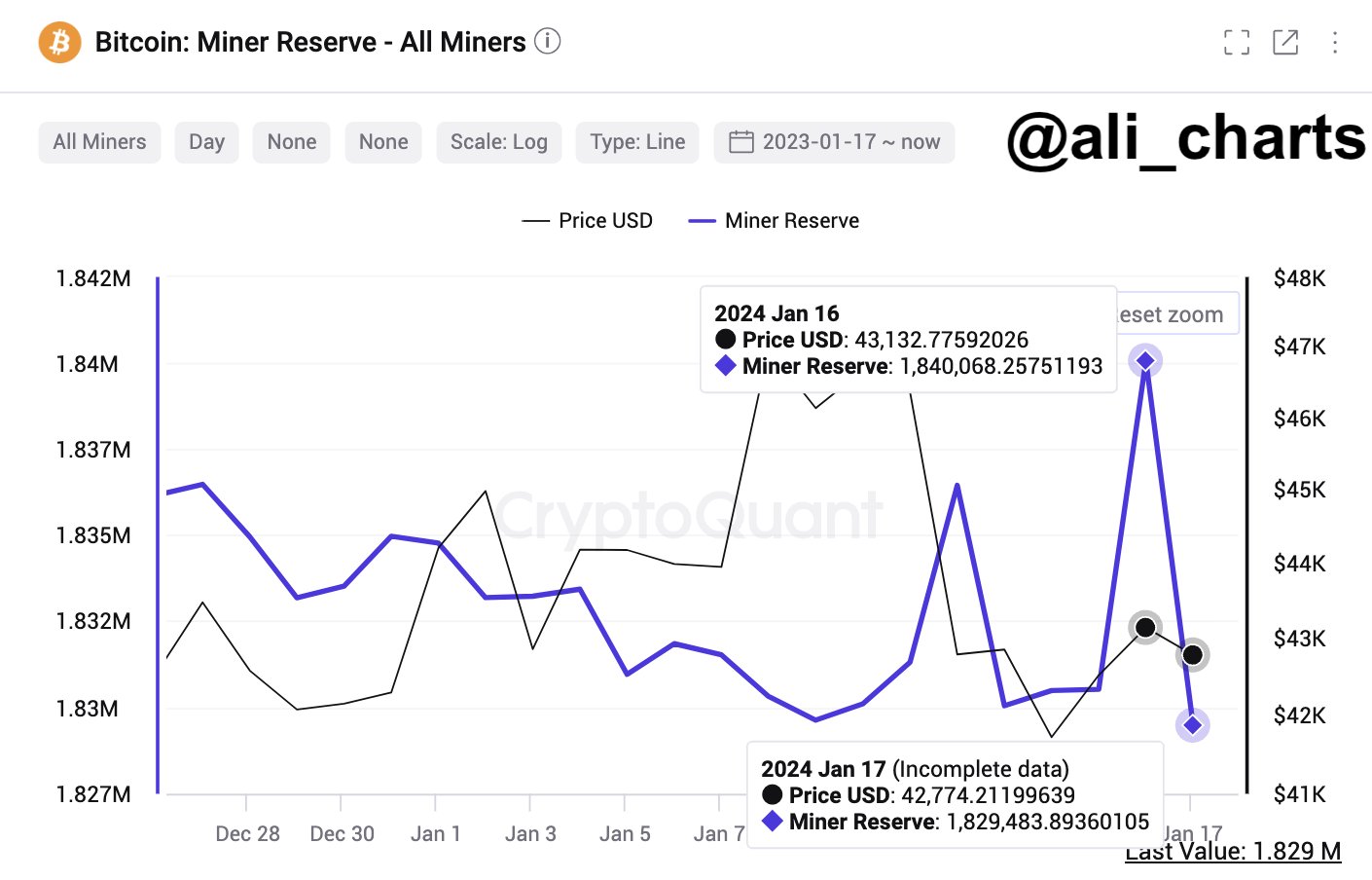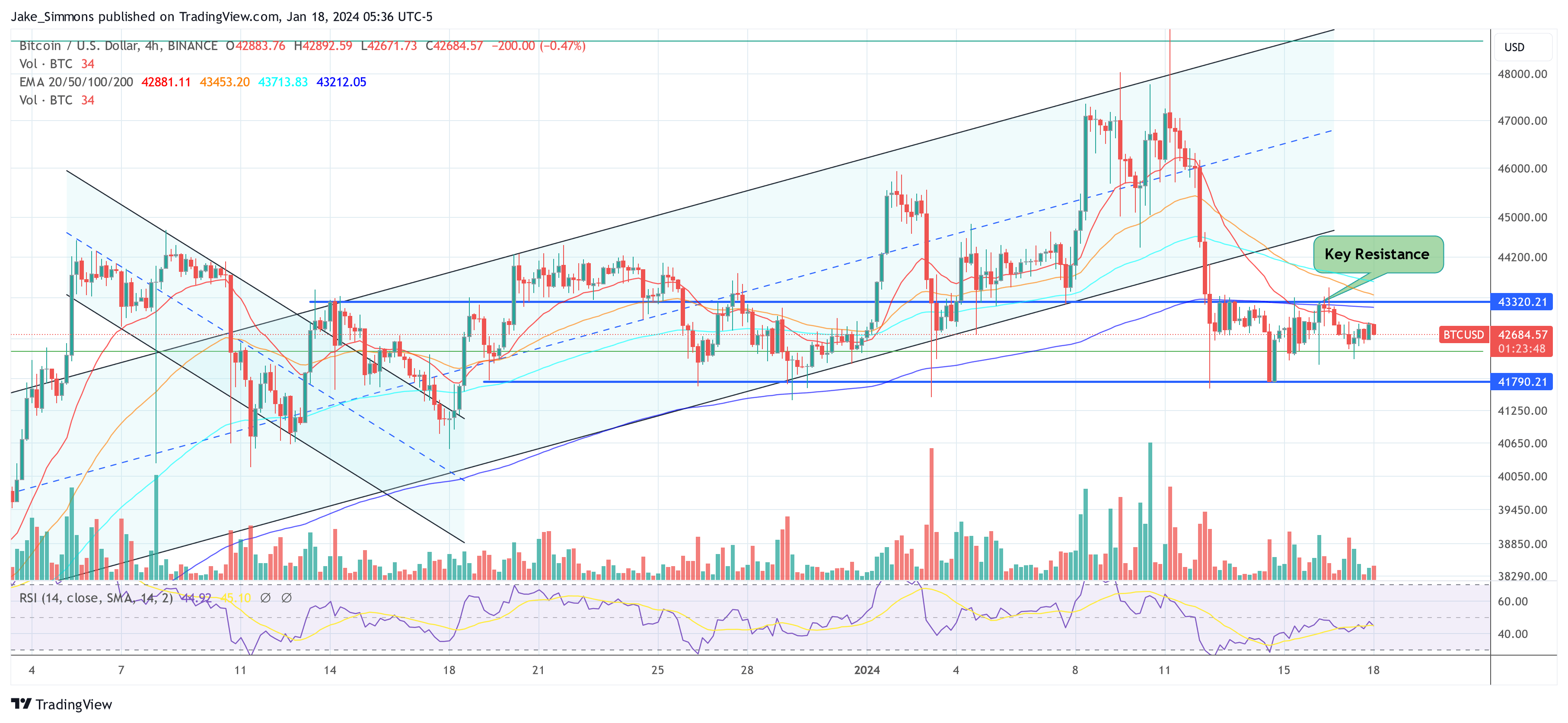The Bitcoin price has gone through a phase of stagnation in recent days, leaving investors and analysts looking for the underlying causes. Three key factors can be seen as crucial in explaining Bitcoin’s current sideways trading trend:
#1 ETF inflows are offset by GBTC selling, but for how long?
Spot Bitcoin ETFs remain the dominant theme in the market, and Grayscale in particular, with its GBTC, remains the focus of analysts. While ETF inflows remain record-breaking, the Bitcoin price remains flat. One of the main reasons for this is likely the outflow on GBTC, which is considered too expensive by other issuers with a fee of 1.5% per annum (compared to 0.25%).
Thomas Fahrer of Apollo pointed out the significant flow differences on the market: “Trading in three days. IBIT +16K BTC, FBTC +12K BTC, BITB +6.7K BTC, ARKB +5.3K BTC, GBTC -27K BTC. GBTC BTC is flowing, but not enough to support the other ETFs. Supply shock incoming.”
Alessandro Ottaviani as long as Further insights, stating: “Bitcoin inflows into the ETFs: +47k, Bitcoin outflows from grayscale: -27k, net inflows: 20k. […] Sooner or later I expect the grayscale outflow to stop or decrease significantly. Those who hold Grayscale GBTC were already interested in Bitcoin and therefore I think they have already made the decision to sell, the execution of which should take place not much later than the launch of the ETF.
Bloomberg analysts James Seyffart and Eric Balchunas to expect some of the GBTC outflows migrate to other Bitcoin exposures, highlighting the complexities of fund accounting and settlement delays in tracking these movements. They noted: “GBTC has surpassed $1.1 billion in outflows… We expect a significant percentage of these assets to find their way back into Bitcoin exposure, especially other ETFs.”
#2 Bitcoin miners sell
Ali Martinez has highlighted Bitcoin miners’ intensified selling activities as another factor influencing the current price stagnation. Recent on-chain data indicates that miners have significantly increased their Bitcoin sales.
Martinez commented on

Notably, the shift in miner behavior is consistent with historical trends, with miners selling their assets to manage cash flow or take advantage of price increases during market rallies.
#3 Consolidation phase after ETF mania
The market is currently undergoing a consolidation phase after the euphoria surrounding Bitcoin ETFs, which led to an 82% rally. Such a phase is considered natural and reflects historical patterns seen in other markets, such as the first gold ETF.
Although gold initially rose about 6%, it then took a full nine months for the actual rally to get underway, sending the price almost fivefold. The same goes for the Bitcoin ETFs. It will take some time before the asset managers’ marketing machine gets going and new institutional investors can be convinced of the new asset class.
Analyst crooked as long as a technical perspective, to report“BTC 4H: Remains flexible to trend confirmations, but doesn’t look good for the bulls with no 4H 200EMA recovery and RSI below 50. Open annually [is] still very important for the overall risk reward. Above is good with bullish confirmations. Below is bad for risk and with bearish confirmations it leads to a downtrend (hedge mode). Pivot area for 1H – 4H trend ~ $42.5K”
At the time of writing, BTC was trading at $42,684.

Featured image created with DALL·E, chart from TradingView.com
Disclaimer: The article is for educational purposes only. It does not represent NewsBTC’s views on buying, selling or holding investments and of course investing involves risks. You are advised to conduct your own research before making any investment decisions. Use the information on this website entirely at your own risk.

